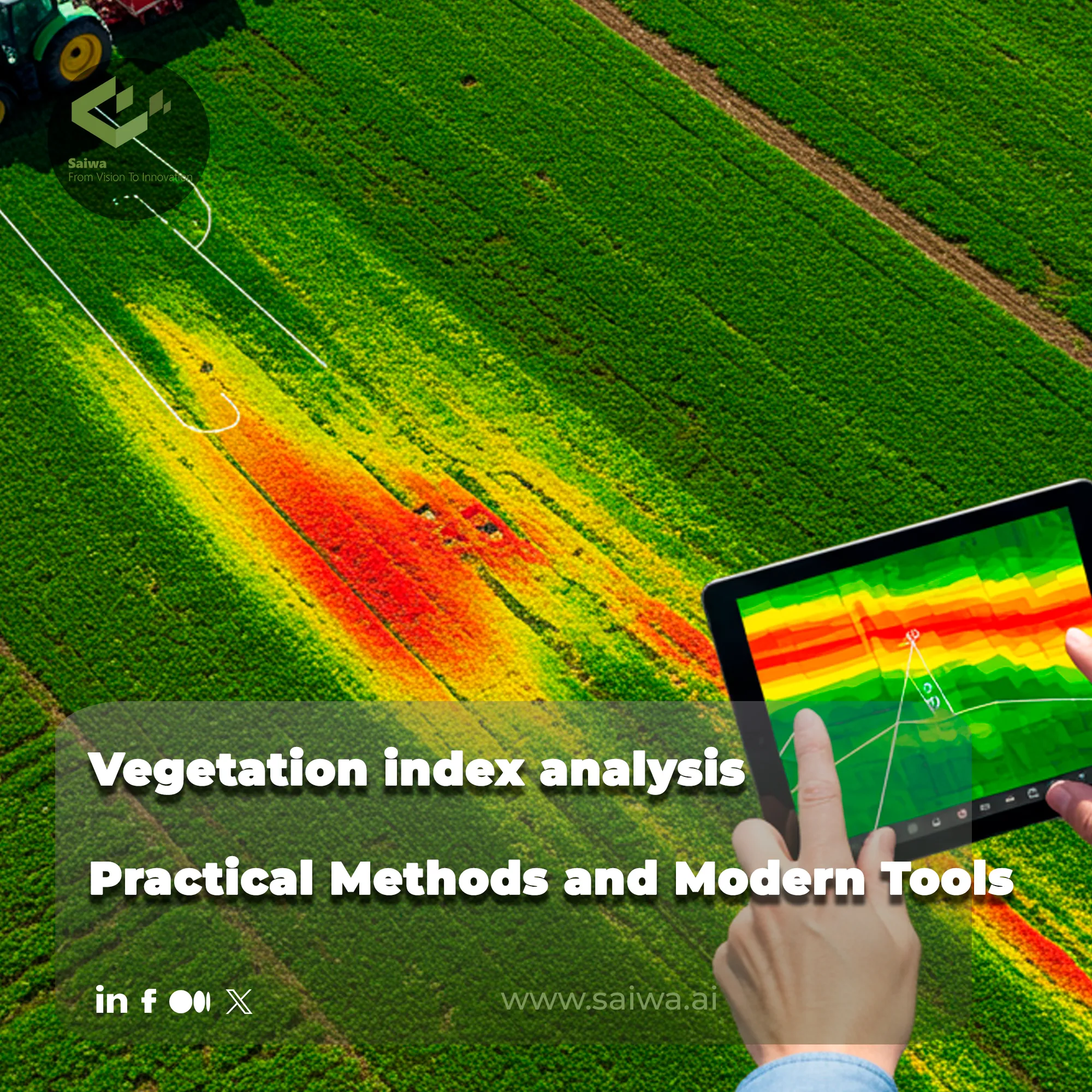Vegetation index analysis - Practical Methods and Modern Tools

Monitoring the health of our planet’s vegetation, from vast forests to individual crops, is a critical challenge. Remote sensing offers a powerful solution, moving beyond simple observation to quantitative assessment. At the heart of this evolution lies the ability to translate spectral data into meaningful metrics of plant vigor.
This article explores the core methods and modern tools transforming this field. We will delve into foundational indices, their practical applications, and how advanced AI platforms like Saiwa’s Sairone are revolutionizing this domain by delivering actionable, data-driven insights.
Core Vegetation Indices Explained
Vegetation indices are mathematical combinations of different spectral bands, designed to highlight the properties of healthy or stressed vegetation while minimizing external factors like soil brightness. To appreciate their power, let's explore four foundational indices that form the bedrock of remote sensing in agriculture and ecology. Each offers a unique lens through which we can view plant life.
NDVI (Normalized Difference Vegetation Index)
The most well-known index, NDVI, provides a robust measure of general greenness. It contrasts the strong absorption of red light by chlorophyll with the high reflectance of near-infrared (NIR) light by plant cellular structures. However, it can become saturated in very dense canopies, losing sensitivity.
EVI (Enhanced Vegetation Index)
Developed to overcome NDVI’s limitations, EVI incorporates a blue band to correct for atmospheric aerosols and reduces the influence of the soil background. This makes it more reliable for analyzing areas with high biomass, such as dense forests.
SAVI (Soil-Adjusted Vegetation Index)
In sparsely vegetated areas, the reflectance from bare soil can distort NDVI values. SAVI addresses this by introducing a soil brightness correction factor (L), making it ideal for arid regions or monitoring early-stage crop growth.
NDRE (Normalized Difference Red Edge)
NDRE utilizes the "red edge" band, which penetrates deeper into the plant canopy than red light. This makes it exceptionally sensitive to chlorophyll content in mid-to-late-stage crops, offering valuable insights into nitrogen levels and stress.

Data Source Comparison for Vegetation Index Analysis
Vegetation indices can be calculated from multiple data sources, each with unique strengths and limitations. Choosing the right source depends on your crop type, field size, required frequency, and budget.
Data Source | Pros | Cons | Best Use Cases |
Satellite Imagery (e.g., Sentinel-2, Landsat, MODIS) | Wide coverage, frequent revisit, often free; standardized | Lower spatial resolution (10–30 m), cloud interference, may miss small-scale issues | Large fields, regional monitoring, long-term trend analysis |
Drone / UAV Imagery | High-resolution (cm-level), flexible timing, can capture specific zones | Expensive equipment, requires flight planning, limited area per flight | Detailed field-level scouting, early stress detection, pest/nutrient hotspots |
Ground Sensors / Handheld Devices | Accurate, real-time, direct measurement | Labor-intensive, limited spatial coverage, costly to scale | Small plots, validation of remote sensing data, precision monitoring of specific zones |
Manned Aircraft / Light Planes | High-resolution over larger areas than drones, faster than ground surveys | Very expensive, less flexible, requires pilots | Large estates, commercial farms, scouting before critical growth stages |
Public / Commercial APIs (e.g., Planet Labs, EOS, Google Earth Engine) | Access to processed vegetation indices, scalable, historical archives | Subscription costs, limited customization, dependent on provider data quality | Trend analysis, comparative studies, predictive modeling |
Advanced Techniques and Emerging Trends
The field is rapidly advancing beyond standard formulas. These innovations provide deeper, more nuanced insights. Let’s examine three key trends shaping the future of Vegetation index analysis.
Hyperspectral and Narrow Band Indices
Unlike multispectral sensors, hyperspectral imaging captures data across hundreds of narrow bands. This allows for the creation of highly specific indices to detect subtle stressors, water content, or even particular plant diseases with greater precision.
Machine Learning Generated Indices
Modern approaches use AI to create custom indices optimized for specific tasks. Instead of relying on predefined formulas, machine learning models analyze the data to find the most effective spectral combinations for challenges like species identification or yield prediction.
Integration with Other Data Sources
For a holistic view, index data is increasingly fused with other technologies. Combining it with LiDAR provides 3D structural information, while integration with radar can penetrate clouds, offering a more complete and resilient monitoring system.
Revolutionizing Vegetation Analysis with Sairone Solution
While indices provide a map of potential issues, platforms like Sairone deliver the diagnosis. Sairone leverages high-resolution drone imagery and specialized AI models to move from general metrics to specific solutions. Instead of just indicating low vigor, it enables targeted Weed detection and precise Plant health monitoring. This empowers farmers and environmental stewards to take immediate, informed action, turning complex visual data into a clear operational advantage.
Conclusion
From the foundational principles of NDVI to the intelligent diagnostics of modern AI platforms, the journey of Vegetation index analysis is one of increasing precision and actionability. The ultimate goal remains constant: to understand and manage our planet's green resources more effectively, ensuring a sustainable future through smarter technology.
Note: Some visuals on this blog post were generated using AI tools.
Authors
I’m an AI Developer specializing in Computer Vision and deep learning. At Saiwa, I work on developing and optimizing intelligent systems that apply advanced image analysis to address real-world challenges, particularly in agriculture. My focus is on creating practical, high-impact AI solutions that enhance efficiency, accuracy, and decision-making across diverse applications.
